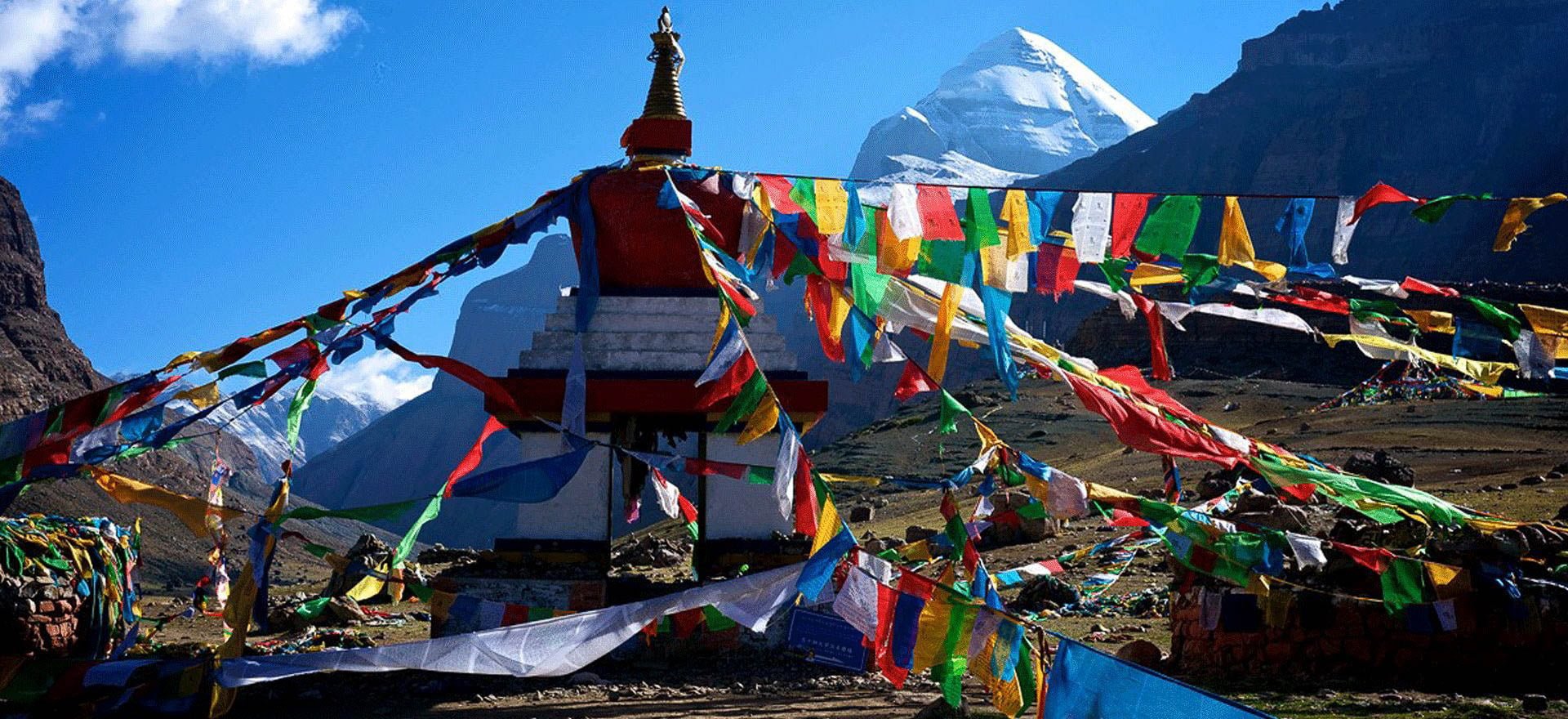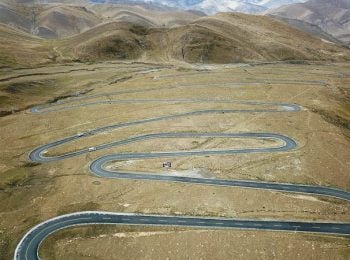Day 1 - Chengdu
Arrive in Chengdu and transfer to your hotel. Overnight Joyhub Cheer Hotel or similar.
Day 3 - Lhasa
Spend the day visiting some of the most important sights of the city including the Jokhang Temple, the most sacred in the city. We also visit the Potala Palace, the former home of the Dalai Lama which dates back to the 7th century – surely Tibet’s most impressive structure. Overnight Tashitakge Hotel or similar. (B)
Day 4 - Lhasa
We visit Drepung Monastery today – once the world’s largest monastery that housed more than 10,000 monks. We also visit Sera Monastery, built in the fifteenth century by Jamchen Choji Sakya Yeshi. Sera is well-known throughout Tibet and is home to several hundred monks, and hosts lively debates between the monks most days. Overnight Tashitakge Hotel or similar. (B)
Please note: Due to the altitude we have not scheduled full days of sightseeing on Days 3 and 4, but have allowed some free time for you to rest and acclimatise.
Day 5 - Ganpa La Pass – Gyantse
We cross over the Gampa La Pass to Gyantse, passing towns and villages and with views of Yamdrok Lake, sitting deep within the mountainous valley and striking, in its bright, turquoise colour. Continuing, we stop at Karo La (5150m) to see the Mount Nyenchen Kangasr Glacier, before arriving at Gyantse and visiting Palkhor Choede Monastery and the Kumbum Stupa. This spectacular multi-door structure is the largest stupa in Tibet and is not only well known for its architecture but for the history of its centuries-old paintings that adorn the inner walls. Overnight Yeti Hotel or similar. (B)
Day 7 - Shigatse – Rongbuk Monastery
We drive to Rongbuk today, crossing several passes along the way. With views of the many peaks over 8000m, the highest being Everest at 8850m, we travel to Rongbuk valley, the location of Everest Base Camp. The Rongbuk Monastery is the highest in the world, housing both monks and nuns. Overnight local tent guesthouses or Rongbuk Monastery Guesthouse. (B)
Please note that Rongbuk Monastery is approximately 8km from Everest Base Camp – the actual base camp has been closed for visits from non-mountaineers.
Day 8 - Saga
After making our way back to the main road we continue our journey into Tibet’s western wilderness, seeing stunning Mt Shishapangma (8020m) and Peikutso Lake on the way. We end the day at Saga. Overnight Yarlung Zangbo Hotel or similar. (B)
Day 9 - Manasarovar Lake – Darchen
Another long drive today but the landscapes along the way more than make up for it. The smooth sand dunes near Thuktso Lake are backed by snow-capped mountains, making for a striking contrast. In the afternoon, we reach Manasarovar Lake, one of the holiest lakes in Tibet and holy to Buddhists, Hindus and followers of the ancient Bon religion. Overnight Gang-gyan Hotel or similar. (BLD)
Day 10 - Manasarovar Lake
A relatively easy day today, as we drive to Manasarovar and take a short hike around the lake, as well as visiting Chiu Monastery. We head back to Darchen in the afternoon. Overnight Gang-gyan Hotel or similar. (B)
Day 11 - Darchen – Guge
After a relaxing day at Manasarovar Lake, we make the trip to Guge, an ancient kingdom of Tibet. We visit the ruins of the Guge kingdom and Zanda Earth Forest, with its landscape of diversely-shaped craggy cliffs, reminiscent of castles, towers and pagodas. The Guge kingdom once thrived as an important stop on the trade route between India and Tibet. Overnight Tada Hotel or similar. (B)
Day 12 - Tholing - Tada Thu - Ali
Today we drive through the valley of Sutlej, with its eroded cliffs and hundreds of tombs carved into the soft rocks. We cross four high passes, all above 5000m, then drive though the Gar Gusa valley and finally reach Ali. This is not an easy journey but all part of the adventure, with the landscapes making it all worthwhile. Overnight Xiang Xiong Hotel or similar. (B)
Days 13-16 - Gegye – Gertse – Tsochen - Nyima
Rather than take the same route back to Lhasa, we journey through the little visited region of northern Tibet. These days are very much about the journey – there are not so many formal ‘sights’ to see but we are travelling through a remote area with interesting scenery and opportunities to spot wildlife en route. On our way to Gegye we pass marshlands and canyons, then continue on past lakes and villages on our way to Gertse. Overnight simple hotels. (B)
Day 17 - Namtso
Drive to Namtso, looking out for wildlife on the way. The road today is still bumpy and muddy, especially after reaching Banger Tso and we have to cross rivers and mud ponds. Namtso Lake is one of Tibet’s three most holy lakes and Tibetans come here in pilgrimage, to circumambulate the lake as a part of a ritual which takes around a month to complete. Namtso Lake is the world’s highest salt water lake and the second largest salt water lake in China, measuring 70km in length and 40km in breadth. Overnight simple hotel. (B)
Day 18 - Lhasa
Explore more of the lake in the morning, before driving back to Lhasa. Time permitting we are able to do some last explorations of Lhasa, on your last day in Tibet. Overnight Tashitakge Hotel or similar. (B)
Day 19 - Lhasa
Transfer to the airport for your onward flight. (B)
Please note: Tibet is a vast region and due to the places visited, you should on occasion be prepared for long drives, particularly in the last few days of the trip. However, we are travelling through some spectacular scenery and will make stops at sights of interest along the way to break up the journeys. Nevertheless, an itinerary like this does mean significant time travelling on some days.
What's included?
What's not included?
Visas
A valid Chinese visa is required and this must be obtained at least one month before time of travel. Tibet travel permit applications will also be required and we will take care of these with the help of our local partners in Tibet.
Health and vaccinations
We are not medically qualified and so we recommend that you speak to your doctor or nearest health professional for advice concerning recommended vaccinations. For more advice on vaccinations you can also visit www.fitfortravel.nhs.uk.
If you have any physical limitations that might impact your ability to participate in the planned tour activities, it’s essential that you make us aware as soon as possible so that we can discuss this with you.
Insurance
It is a condition of joining our tours that you have suitable travel insurance in place, and we cannot accept travellers without insurance. All policies differ in terms of what they will cover, but as a minimum you need medical and health cover which will cover you for the whole time that you are away. Most policies will also include cancellation cover, which will cover you if an unforeseen circumstance obliges you to cancel your trip. We recommend that you obtain your insurance as soon as you book your trip.
Please note that government travel warnings often affect the validity of your travel insurance, and you should check this with your insurance company.
Money
Renminbi (RMB), as in the rest of China, is the legal currency in Tibet. The only foreign exchange services you will find when away, will be in the Bank of China and certain upmarket hotels.
Local conditions
When travelling to some of the destinations we offer you need to bear in mind that things won’t always work here as we’re used to them working at home. Travelling in underdeveloped and under-touristed destinations requires both patience and a sense of humour. There may be problems with infrastructure, attitudes may be different, and maintenance may not be as high a standard as we would always like, but this is very much part and parcel of travelling in such a place. We aim to resolve any issues as quickly as possible, and thank you for your patience.
Travel advice
We keep a very close eye on the travel advice issued by the UK Foreign and Commonwealth Office so that we can keep you up to date with any warnings.
At the time of writing there are no warnings against travel to Tibet from the FCO – other nationalities need to check the stance of their own governments.
This relates to advice from the British government – other nationalities need to check the stance of their own governments.
















